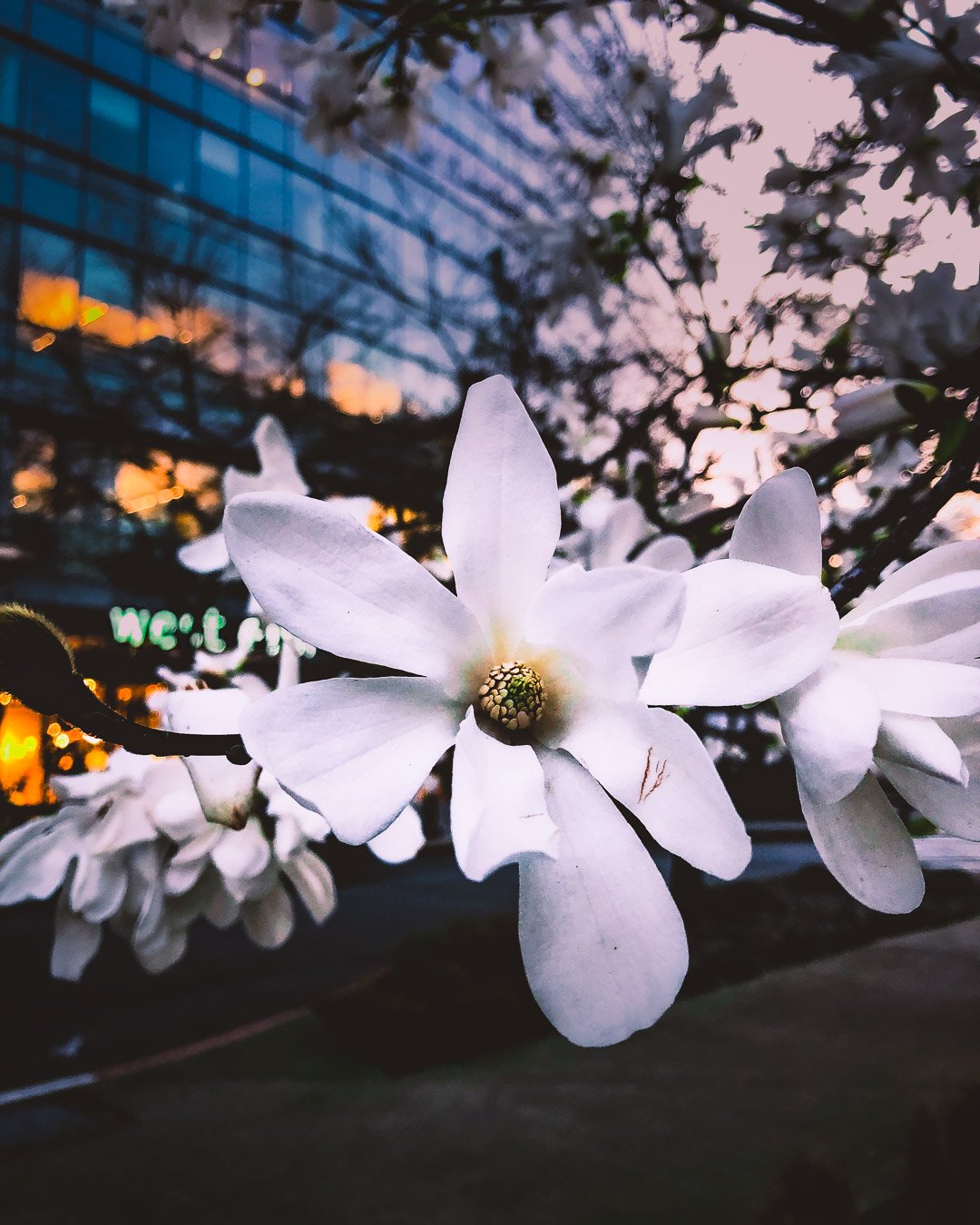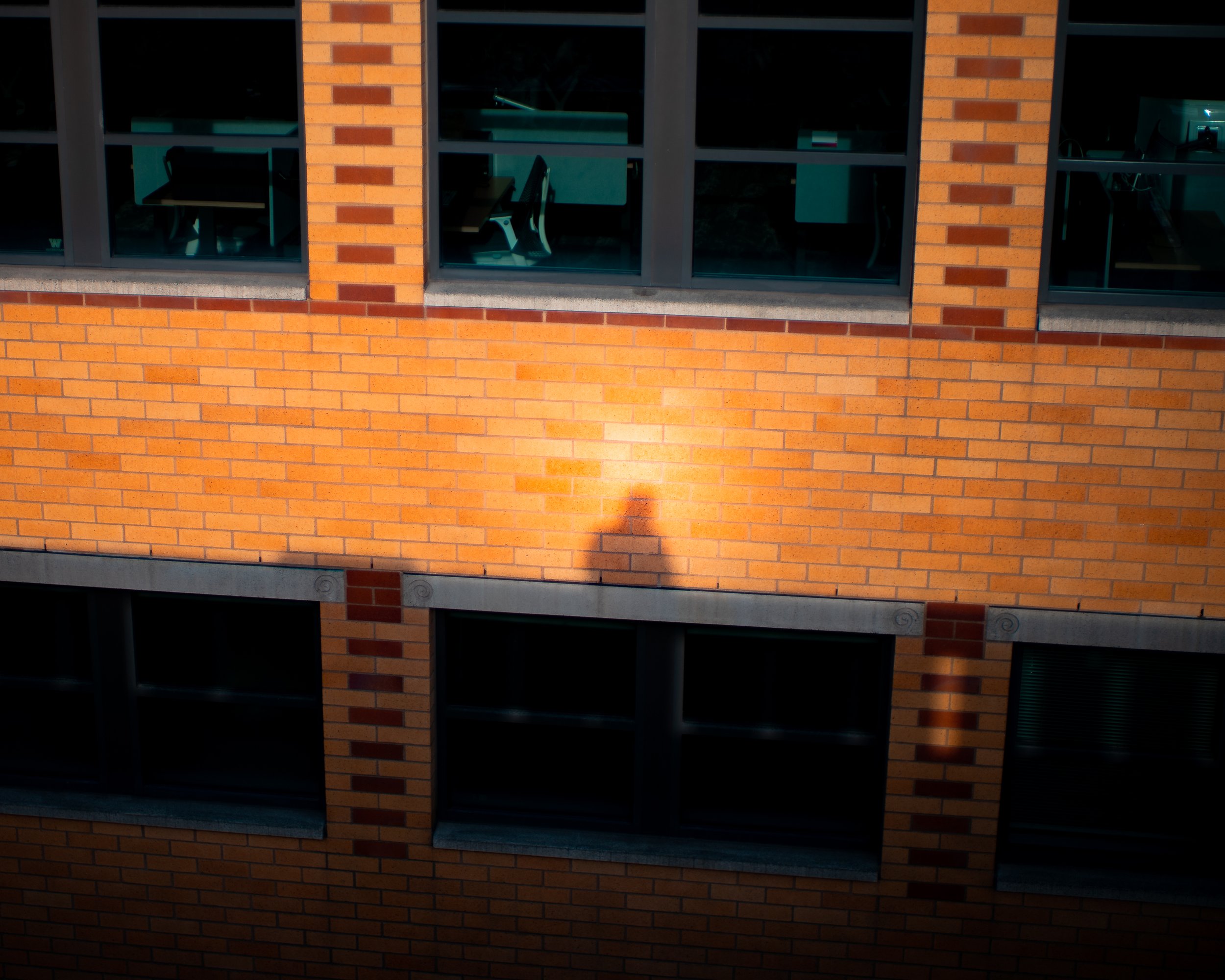
Visual Hierarchy
Visual hierarchy is the practice of understanding what makes elements the most prominent in a photograph or piece of artwork.
There are many factors, and as with many things in art, many opinions on the ordering of visual hierarchy. Here, we will learn about the basics. Covering the 4 elements of a photo that have been scientifically proven to draw the eye, we will then learn about what visual hierarchy is, and finally I will give you a descending order, which is my practical understanding of visual hierarchy.
The 4 Elements That Draw The Eye
Let’s start with science. Science has found these four elements to draw the viewers attention:
Our tendency to seek out the human face, whether it is implied, a shadow, or in the background is always there. We are drawn to faces in an image, always.
This photo would feel very different without the bits of a face present on the left hand side.
(Check out composition exercises to learn more about balance.)
Human Faces:
The Brightest Part of An Image:
The viewer’s eyes will be drawn to the brightest part of your image, or the most pure value of white! It’s very important to know where the brightest part of your image is, and to pay attention to it.
Originally the brightest part of this image may have been in the background and not on the flower that is in the center. By lowering the white value and brightness of the background I keep the viewer looking at what I am trying to show them.
Exactly that. If you have an image with a bunch of different colors, and you desaturate all the others except one, (Or over saturate that one) that color will stand out among the crowd.
(It’s important to note that colors themselves have a hierarchy. We have receding colors, and advancing colors. You can read more about colors, and color theory here.)
In this image we have many colors. The seafoam green is the most saturated, so even though it is a receding color, it draws your eye.
The Most Saturated Color:
What is contrast? The state of being strikingly different from something else in juxtaposition or close association. Basically, where in your photo do you have the biggest difference between light and dark in close association?
Take this photo: The point in the middle where the lightest part of the image is, there is also a shadow. So, this is taking advantage of not only the highest point of contrast but also the brightest point in the image to establish the subject.
The more tools you use to craft and direct your image, the more clear your message will be.
The Area of Most Contrast
In Summary,
These 4 elements have been studied and proven to draw the eye.
-The Human Face
-The Brightest Point
-The Point Of Most Contrast
-The Most Saturated Color
Through my observations and studies, there are many elements that go into establishing what comes first in visual hierarchy. I imagine it like a slider, and you can use more and more tools to play around with the sliders and overcome different hierarchies that are already in place.
I rank visual hierarchy as follows:
Human Face > Brightest Point > Most Contrast > Saturated Color
This is what I’ve found. Remember, you can control all of these except the human face in post. Play around with it. This is all I will cover in this section of visual hierarchy.
Stay Warm.
dc
p.s. Remember, all of these articles I write about color theory, and composition, and visual hierarchy are to help you establish a subject. From there you can learn how to create your own stories and lead your viewers around. But one of the most basic and fundamental portions of photography is to establish a subject.





